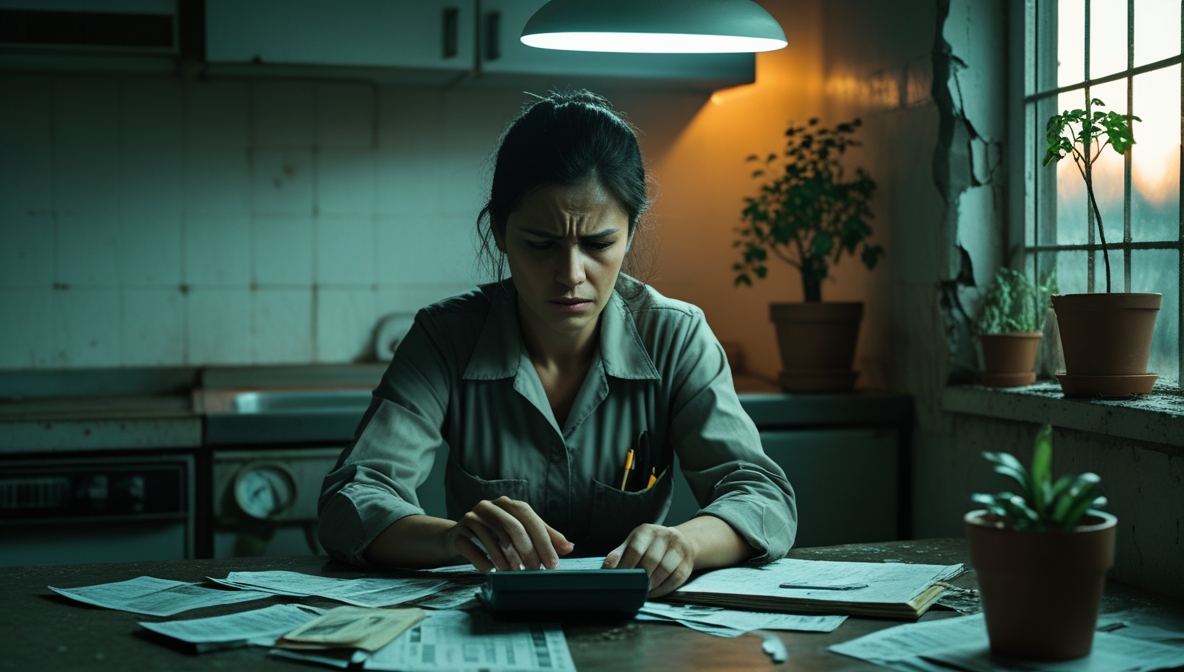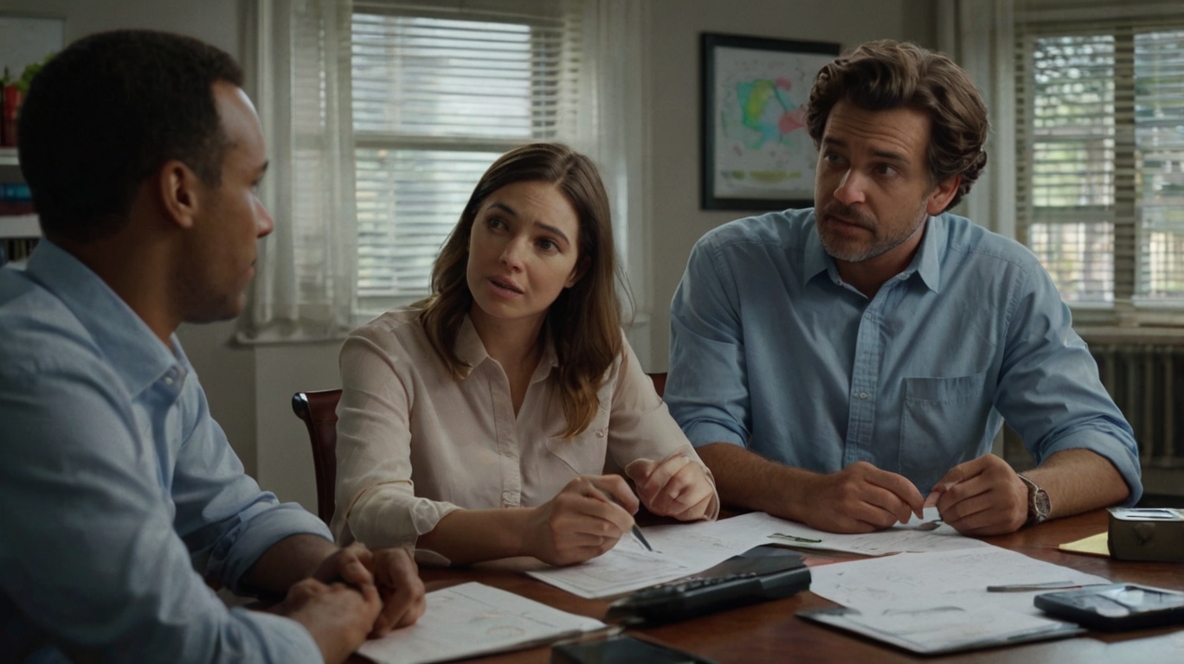The Roar of a Distant Future or the Whisper of Today’s Security?
That knot in your stomach, the one that tightens when you think about money—where it is, where it’s going, or if it’s even working for you? That’s the battlefield where the great debate of high-yield savings vs. investing wages its daily war within us. It’s more than numbers; it’s about the life you’re trying to build, brick by painstaking brick, while the wolves of uncertainty howl at the door.
You feel the pull, don’t you? The seductive promise of growth, the thrilling (and terrifying) dance of the markets, set against the quiet comfort of a steadily, if slowly, accumulating safety net. This isn’t just about financial strategy; it’s about choosing your armor for the battles ahead.
The Guts of the Matter: Savings Sanctuary vs. Investment Arena
The truth, stripped bare, is that one path offers a warm, well-lit room with a sturdy door, the other a journey into a vast, untamed wilderness brimming with both treasure and peril. High-yield savings accounts (HYSAs) are your financial fortress: FDIC-insured, offering predictable, albeit modest, interest. They are the bedrock for your emergency fund, your short-term goals, the cash you can’t afford to gamble.
Investing, on the other hand, is the wild frontier. It’s where your money has the potential to multiply, to conquer inflation, to build generational wealth. But it’s also where it can stumble, fall, and sometimes, feel like it’s vanished into thin air. The rewards can be immense, but the risks? They’re just as real.
The Quiet Strength of a Full Coffer: Understanding HYSAs
Imagine the sigh of relief, deep and resonant, that comes from knowing there’s a pile of cash, snug and secure, ready for when life decides to throw one of its infamous curveballs. That’s the essence of a High-Yield Savings Account. It’s not about getting rich quick; it’s about staying sane slow. These accounts typically offer interest rates significantly higher than your dusty old neighborhood bank’s savings account, a small rebellion against the erosion of inflation.
Your money remains liquid—accessible when the alternator blows or the roof springs a leak. It’s insured by the FDIC up to $250,000, a government-backed promise that even if the bank itself crumbles, your emergency fund won’t. It’s the financial equivalent of a well-stocked pantry before a blizzard: boring, perhaps, but profoundly reassuring.
The Siren Song of Growth: Stepping into the Investment Current
There’s a thrumming energy to the world of investing, a sense that you’re tapping into the relentless engine of human ingenuity and economic expansion. Investing isn’t just stashing money; it’s deploying it, sending it out into the world to work, to build, to potentially return with more than it left with. This is where you can truly outpace inflation, harness the magic of compounding, and watch small sums grow into significant wealth over time.
Stocks, bonds, ETFs, mutual funds—they’re all vessels on this vast ocean. Some are nimble speedboats, capable of incredible bursts of speed (and equally spectacular flameouts). Others are sturdy cargo ships, slower but more resilient against the storms. The trade-off for this potential for higher returns is, of course, greater risk. The market ebbs and flows, a living entity with moods and tantrums. Patience and a strong stomach are often prerequisites for entry.
A Visual Reckoning: The Save or Invest Dilemma Unpacked
Sometimes, seeing the paths laid out, the options weighed in a clear, concise format, can cut through the mental fog. The folks at NerdWallet have put together a thoughtful exploration of this very question, helping you visualize the decision-making process. It’s a solid primer for anyone standing at this financial crossroads, feeling the push and pull of immediate security versus long-term ambition.
Source: NerdWallet on YouTube
The Abyss Gazes Back: Defining Your Risk Threshold
The fluorescent lights of the late-night diner hummed, casting a sterile glow on Priya’s meticulously organized spreadsheets. At 58, a graphic designer with a penchant for precision, she’d seen her share of financial fads flare and fizzle. Decades ago, a charismatic “friend” had convinced her to pour a significant chunk of her savings into a tech startup that promised to “revolutionize the pet food industry.” It had vanished, along with her investment, leaving a scar tissue of caution that still ached on volatile market days. Now, her definition of risk was less about potential percentage gains and more about the quality of her sleep. Could she endure the gut-churning drops without succumbing to panic? The answer, honed by experience, was a firm “not like before.”
Your “risk tolerance” isn’t some abstract financial term; it’s the measure of your soul’s elasticity when faced with potential loss. Are you the type to white-knuckle through a market downturn, confident in the long game? Or does the mere thought of your principal shrinking send shivers down your spine? There’s no shame in either answer. Understanding this, truly understanding it in your bones, is paramount. It dictates whether investing feels like an empowering venture or a recurring nightmare.
The Unfolding Map: When Do You Need the Treasure?
A faded photograph of a Tuscan villa was a permanent fixture on Mateo’s corkboard, a splash of sun-drenched ochre against the cool grey of his cubicle. He was 32, an aerospace engineer, and that villa wasn’t just a dream; it was a 20-year plan. He also wanted a down payment for a modest condo in five years, and a buffer for the inevitable “life happens” moments. Each goal had its own timeline, its own urgency, and therefore, its own financial vessel.
Your time horizon is the invisible ink that writes the rules of engagement for your money. Short-term goals—that new car in 18 months, the emergency fund that needs to be liquid yesterday—demand the stability of an HYSA. The market’s volatility is simply too great a gamble for funds you’ll need soon. Long-term aspirations, however, like Mateo’s Tuscan dream or a comfortable retirement decades away, can afford to ride out the market’s waves, giving compounding the years it needs to work its patient magic.
Sanctuary First: When the HYSA Reigns Supreme
The smell of stale coffee and disinfectant clung to Lena as she unlocked her apartment door after her second shift. Juggling her job as a hospital orderly with weekend catering gigs left her perpetually exhausted, each dollar earned feeling precious, almost sacred. Her son, Kai, needed new glasses, and the old car was making a noise that sounded expensive. For Lena, the idea of risking any of her hard-won savings in the stock market felt like playing Russian Roulette with their fragile stability. Her HYSA wasn’t making her rich, but the small, steady trickle of interest, the knowledge that the money was there, accessible, safe, was a lifeline. It was the difference between breathing and drowning some months.
An HYSA is your non-negotiable stronghold for:
- Emergency Funds: Three to six months of living expenses. This is your shield against job loss, medical emergencies, or unexpected major repairs.
- Short-Term Savings Goals: Money earmarked for a down payment on a house in the next year or two, a wedding, or a significant planned purchase.
- Parking Large Sums Temporarily: If you’ve received an inheritance or sold an asset and haven’t decided on your next investment move, an HYSA keeps it safe and earning some interest.
In these scenarios, capital preservation and accessibility trump the allure of higher, but riskier, returns. It’s about sleeping at night, knowing that the ground beneath your feet is solid, at least for the essentials.
Taking Flight, Even with Clipped Wings: Prioritizing Growth
That raw, undeniable human hunger for more – not more stuff, necessarily, but more freedom, more security, more life – is what fuels the courage to invest. Even when you’re grappling with the realities of investing with limited funds, the long-term power of the market beckons. If your time horizon stretches out like a distant highway, and you have a solid emergency fund already established, then investing becomes not just an option, but a vital strategy for outpacing inflation and building real wealth.
Consider investing when:
- Retirement Planning: This is the quintessential long-term goal. Decades allow your investments to weather market storms and benefit from compounding.
- Long-Term Wealth Accumulation: For goals five, ten, twenty years down the line, investing offers the potential for growth that savings accounts simply can’t match.
- You’ve Got Your Safety Net: Once your HYSA is comfortably padded for emergencies, any additional long-term savings can often work harder for you in the market.
It’s about sending your financial soldiers out to conquer new territory, rather than just guarding the fort. And yes, even small, consistent investments can, over time, build an empire. It takes guts, especially when funds are tight, but the alternative is watching your purchasing power slowly bleed out to inflation.
The Alchemist’s Secret: Blending Safety with Ambition
Why choose one when the true power lies in the synergy of both? The stark dichotomy often presented in the high-yield savings vs. investing debate is a false one. A truly resilient financial life isn’t an either/or proposition; it’s a “both/and” masterpiece. Imagine a financial ecosystem where your HYSA is the fertile soil, nourishing the roots and providing stability, while your investments are the mighty trees reaching for the sun, growing stronger and taller with each passing season.
This hybrid approach allows you to tailor your strategy to your unique life. Short-term needs and emergency funds reside safely in the HYSA. Long-term aspirations are fueled by a diversified investment portfolio. It means you’re protected from immediate storms while still planting seeds for a future harvest. This isn’t compromise; it’s strategic genius, acknowledging that life demands both caution and courage.
From Zero to Investor: Igniting Your Financial Engine
The first step off a cliff is always the most terrifying, even if there’s a safety net woven of sound strategy below. Getting started with investing can feel like deciphering an ancient, coded language, especially if you’re figuring out how to build wealth with a low income. But the path is more accessible than you think. You don’t need a king’s ransom to begin. Many wonder how to start investing with $100, and the answer is, quite readily these days!
Consider exploring low-cost index funds or Exchange Traded Funds (ETFs). These are like baskets holding tiny pieces of many different companies, offering instant diversification. Think of best index funds for small investors or best ETFs for first-time investors. The concept of investing in fractional shares means you can buy a slice of a high-priced stock without needing to afford the whole share. And then there’s dollar-cost averaging explained: investing a fixed amount regularly, regardless of market ups and downs, which smooths out your purchase price over time. Even building a diversified portfolio with $500 is no longer a pipe dream. The key is to start, to learn, and to stay consistent. That first small investment is an act of profound self-belief.
Your Arsenal for the Ascent: Tools to Guide Your Hand
In this digital age, you’re not alone in the wilderness. A proliferation of tools can help you navigate the terrain. Many platforms now offer some of the best micro-investing apps for beginners, allowing you to start small, sometimes even investing spare change automatically from your purchases. These are fantastic for dipping your toes in the water. For those who prefer a more hands-off approach, exploring the best robo-advisors for low-budget investing can provide automated portfolio management tailored to your risk tolerance and goals. Online banking platforms often provide high-yield savings options with competitive rates and user-friendly interfaces. Research, compare, and find what makes you feel empowered, not overwhelmed.
Whispers from the Wise: Deepening Your Financial Wisdom
The path to financial mastery is paved with the insights of those who’ve walked it before. These aren’t just books; they’re mentors in print, ready to challenge your assumptions and expand your understanding:
-
“The Little Book of Common Sense Investing” by John C. Bogle: A clarion call for low-cost index fund investing from the founder of Vanguard. It’s like having a wise, no-nonsense grandfather explain how not to get fleeced on Wall Street.
-
“I Will Teach You to Be Rich” by Ramit Sethi: Cuts through the jargon with a practical, often irreverent, six-week program. Perfect if you want actionable steps delivered with a side of bracing honesty.
-
“Get Good with Money” by Tiffany Aliche (The Budgetnista): A holistic approach to financial wellness, presented with warmth and an infectious can-do spirit. She makes budgeting feel less like a punishment and more like an act of self-care.
Lingering Shadows: Your Questions Answered
Is it truly better to invest or stick with a high-yield savings account?
The blunt truth? It depends on what terrifyingly specific, or gloriously distant, financial beast you’re trying to tame. For the snarling wolf at your door—emergency cash, a down payment needed by next spring—the HYSA is your iron shield. It’s about protecting what you have. For building a fortress against the ravages of time and inflation, for chasing those faraway dreams, investing, despite its own set of monsters, is usually the sharper spear in the great high-yield savings vs. investing hunt. Most savvy warriors use both, a shield in one hand, a spear in the other.
Priya eventually considered investing again. What did she do?
After her early misadventure, Priya spent years meticulously rebuilding. The visceral memory of that loss never fully faded, but the desire for a more comfortable retirement, one not solely reliant on her HYSA’s modest returns, began to outweigh her fear. She started small, incredibly small, with a well-diversified, low-cost index fund, the kind gurus like Bogle champion. She researched best index funds for small investors obsessively. Her contributions were automatic, a tiny siphon from her paycheck she barely noticed. It wasn’t thrilling. There were no meteoric rises. But there were also no terrifying plummets. Slowly, watching that small sum grow, even minutely, began to heal the old wound. It was less about chasing riches and more about reclaiming a sense of control, one cautious, steady step at a time.
What if I only have a tiny bit to start with, say, under $100? Is investing even worth it?
Is a single seed worth planting? Yes, if you dream of a tree. The magic of compounding needs two things: time and something to compound. Even small, consistent investments can grow substantially over decades. Many platforms now allow you to buy fractional shares or invest tiny amounts regularly. Thinking about saving vs. investing, even a trickle into an investment can, over the long haul, become a river. The key is to start. That first $20, $50, $100 invested isn’t just money; it’s a declaration of intent, a commitment to your future self. It’s often the psychological barrier that’s higher than the financial one.
Beyond the Horizon: Charting Your Own Course
Your journey doesn’t end here. Seek out more knowledge, more perspectives. The financial landscape is vast and ever-changing:
- Investopedia: Saving vs. Investing – A solid primer on the fundamental differences.
- Chase Bank: HYSA vs. Investing – Insights from a major financial institution.
- r/personalfinance – A community forum on Reddit where you can find discussions and real-life experiences.
- r/Bogleheads – For those interested in the long-term, low-cost investing philosophy of John Bogle.
- Yahoo Finance: HYSA vs Investing – For current articles and perspectives.
Ignite Your Financial Power: The Next Step is Yours
The battle of high-yield savings vs. investing isn’t about a single victor, but about forging your own victorious strategy. You’ve felt the fear, the uncertainty, maybe even the sting of past mistakes. Good. That means you’re human. Now, take that raw, pulsing energy and channel it. Open that HYSA. Make that first, trembling micro-investment. Pick up one of those books. Knowledge isn’t just power; it’s the architect of resilience. The future you is depending on the courage you summon today. What one small, defiant act will you take right now to claim your financial sovereignty?







